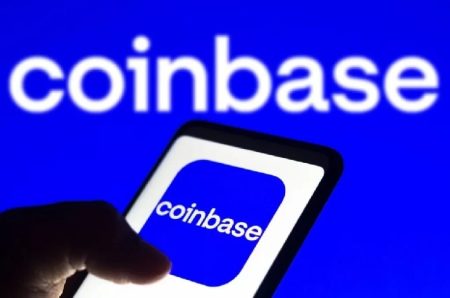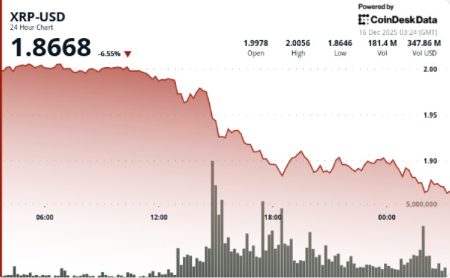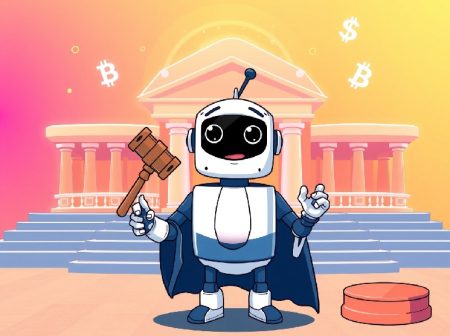Millions in XRP Vanish: A Retiree’s Crypto Security Nightmare Offers Critical Lessons
Retired American Couple Loses Life Savings in Devastating XRP Theft
In a sobering reminder of cryptocurrency security risks, a North Carolina retiree has reported that more than $3 million in XRP cryptocurrency disappeared from his digital wallet in mid-October, potentially due to a critical security misstep. The case highlights the fine line between the promise of cryptocurrency self-custody and its pitfalls, especially for retail investors managing substantial holdings.
Brandon, a 54-year-old retiree who has chosen to withhold his last name for privacy concerns, discovered the theft on October 15 when checking his Ellipal wallet mobile application. What he found was devastating – his balance of approximately 1.2 million XRP tokens (valued at over $3 million) had vanished, leaving only small amounts of other cryptocurrencies untouched. According to Brandon’s account, which he shared through multiple YouTube videos, the funds represented nearly the entirety of his and his 60-year-old wife’s retirement savings, accumulated since 2017.
“We had been planning to use these funds to purchase a home in Las Vegas,” Brandon explained in one of his videos, the distress evident in his voice. “This wasn’t just an investment – it was our future.” The loss has sent ripples through the cryptocurrency community, prompting an investigation by renowned blockchain detective ZackXBT and raising important questions about the responsibilities of both users and wallet providers in the still-evolving cryptocurrency ecosystem.
The Anatomy of a $3 Million Cryptocurrency Heist
According to Brandon’s detailed timeline, the theft occurred on Sunday, October 12, though he only discovered it three days later. The transaction pattern exhibited the telltale signs of a sophisticated crypto heist: two initial test withdrawals of 10 XRP each around 11:15 a.m. Eastern time, followed by a massive sweep of approximately 1,209,990 XRP tokens to a newly created address. From there, the funds rapidly dispersed across dozens, then hundreds of wallets in what security experts call “chain hopping” – a technique designed to obscure the trail of stolen assets.
Blockchain analyst ZackXBT, who has built a reputation for tracking cryptocurrency theft cases, conducted an independent investigation after Brandon’s story gained traction online. In an October 19 analysis shared on X (formerly Twitter), ZackXBT reported tracing the stolen XRP through more than 120 Ripple-to-Tron transactions executed through Bridgers, a cryptocurrency swap service previously known as SWFT. The analyst noted that some blockchain explorers mistakenly labeled these transactions as “Binance” transfers, as Bridgers utilizes the popular exchange for liquidity purposes.
By October 15, according to ZackXBT’s investigation, the funds had been consolidated on the Tron blockchain at address TGF3hP5GeUPKaRJeWKpvF2PVVCMrfe2bYw. From there, they were apparently dispersed to over-the-counter brokers connected to Huione, an online marketplace operating in Southeast Asia that has recently appeared in enforcement actions by U.S. authorities. This complex laundering process illustrates why cryptocurrency theft recovery remains so challenging – once assets cross blockchain boundaries and enter less-regulated markets, tracing becomes exponentially more difficult.
The Critical Cold Wallet vs. Hot Wallet Confusion
At the heart of this case lies what appears to be a fundamental misunderstanding about cryptocurrency storage security. On October 18, Ellipal, the hardware wallet manufacturer, released a statement suggesting that their review indicated Brandon had imported his hardware wallet’s seed phrase into the Ellipal mobile app. This seemingly innocuous action would have effectively recreated his wallet on an internet-connected device – transforming what should have been secure “cold storage” into vulnerable “hot storage.”
“When a cold wallet’s seed phrase is used on a phone or tablet, the seed and resulting private keys are stored on that device,” Ellipal explained in their communication with Brandon. “This essentially converts it to a hot wallet, significantly reducing security protections.” The company emphasized that their hardware devices are designed to be air-gapped – physically disconnected from the internet – and maintained they had not seen thefts originate from properly used hardware devices themselves.
Brandon acknowledged having the Ellipal app installed on both an iPhone and an iPad. He noted that the iPhone app displayed a blue background, which according to Ellipal signifies a cold-wallet connection, while the iPad app showed an orange background, indicating a hot wallet configuration. This visual distinction, potentially misunderstood or overlooked, may have been a critical factor in the security breach. While Ellipal’s explanation points to user error, it raises questions about the clarity of their user interface and whether their onboarding process sufficiently educates customers about these crucial security distinctions.
The Slim Chances of Recovery and Lessons for Crypto Holders
For Brandon and his wife, the prospects of recovering their funds appear grim. ZackXBT cautioned that most self-proclaimed cryptocurrency “recovery” firms are predatory operations that charge substantial fees while producing little of value. The blockchain investigator noted that while quick reporting to legitimate investigators and compliant exchanges can sometimes result in flagging or freezing of stolen funds, successful recoveries are exceedingly rare once assets have moved through cross-chain swaps and over-the-counter trading venues like those identified in this case.
Brandon has filed a report with the FBI’s Internet Crime Complaint Center and contacted local law enforcement, but he expressed frustration about the challenges in quickly connecting with specialized cybercrime units equipped to handle such cases. “By the time authorities understand what happened, the money is usually long gone,” he lamented in one of his videos, acknowledging the limited recovery options.
The case offers a stark reminder of cryptocurrency’s double-edged nature: while it offers financial autonomy through self-custody, that same independence means there are few safeguards when things go wrong. Unlike traditional financial systems, there are no deposit insurance protections, no fraud departments to reverse unauthorized transactions, and limited regulatory frameworks governing these assets. For users holding substantial cryptocurrency positions, the security burden falls almost entirely on their shoulders.
Critical Security Practices for Cryptocurrency Investors
The most important lesson from this unfortunate case is straightforward but crucial: if your goal is secure cold storage, never input a hardware wallet’s seed phrase into any internet-connected device, including mobile or desktop applications. This 12 to 24-word recovery phrase is the master key to your funds, and exposing it to an internet-connected environment fundamentally compromises the security model of hardware wallets.
Cryptocurrency security experts recommend several best practices that might have prevented this type of loss. First, use distinct seed phrases for any hot wallet (daily spending) and cold wallet (long-term storage) configurations. Second, consider implementing a BIP39 passphrase (sometimes called a “25th word”) as an additional security layer for high-value cold storage – this creates a secondary password requirement beyond the seed phrase. Third, test recovery procedures with small amounts before committing significant funds to any wallet solution. Finally, consider distributing risk across multiple storage solutions rather than concentrating wealth in a single wallet.
Brandon’s decision to share his experience, despite the personal embarrassment and devastating financial consequences, may ultimately help others avoid similar fates. “I’m not looking for sympathy,” he explained in his final video on the subject. “I’m sharing this so others don’t make the same mistake I did.” As cryptocurrency adoption continues to grow among retail investors, cases like Brandon’s serve as crucial reminders that with financial freedom comes significant responsibility – and in the blockchain world, security education remains as valuable as the assets themselves.















